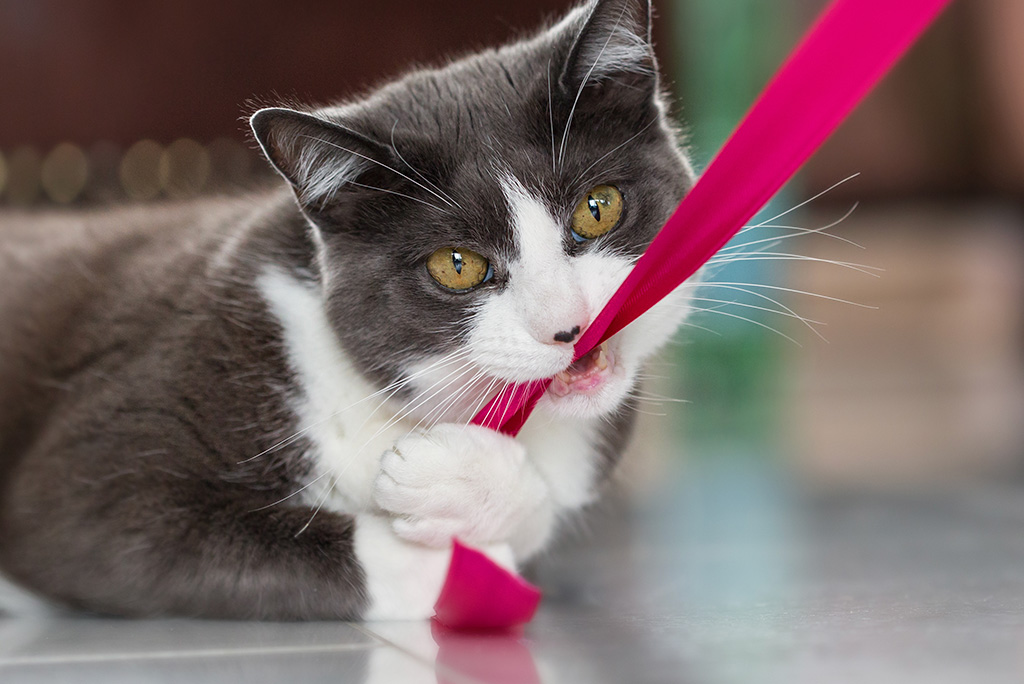Compared to dogs, cats can often be mysterious and aloof. A dog lets you know they’re happy to see you with a wag of a tail while a cat may just walk away from you with passing indifference. It’s easy to tell when a dog is sick –– lethargy, lack of eating, inability to play. It’s a lot harder for cats, so it’s no surprise that over time, we have misunderstood the signals they’re sending or created untruths about them. Here are a few common myths about cats and what to do about them:
If my cat is indoors, he doesn’t need to get shots
False! All cats need to receive immunizations, regardless of whether they’re indoor or outdoor. Which immunizations depends on your particular cat’s risk factors, so discuss this with your veterinarian during your cat’s next visit.

As long as my cat is eating, they’re fine
Unlike dogs, cats don’t like to let us know when they’re not well. Most often, they’ll hide their discomfort and keep up with their normal routines, including eating. Even with inflamed gums or other dental issues, they’ll work around their pain to keep up routine.
Cats are basically small dogs and get treated the same way
Whether intentional or not, most pet owners show preferential treatment to their dogs when it comes to healthcare. In fact, about 50% of American cats don’t get regular veterinary care. According to the AVMA, among cat owners, 44.9 percent did not take their cat or cats to a veterinarian during 2011, up from 36.3 percent in 2006 (source).
The same can be said for pet insurance. In 2018, dogs represented approximately 88.9% of insured pets (source).
I can tell when my cat is sick or has lost weight
Again, cats are very good at hiding when they are sick. It’s actually a lot harder to tell when a cat has lost weight because of their naturally smaller stature. Kidney disease is the #1 killer of cats, and can go undetected for a long time.
Stinky cat breath is normal
While no animal breath is especially pleasant, smelly breath is indeed indicative of a problem. Dental disease is extremely common in cats. Signs of sickness can range from inflamed gums to rotted looking teeth. Bad breath can definitely be an early symptom to look out for.
Cat Hacks
Now that we’ve busted some myths, here are some tips to familiarize yourself with to ensure that your feline friend lives their best life.
Make vet trips easier by familiarizing your cat with their carrier days in advance. Many cats get anxious in their carriers because they despise the feeling of being closed in. By bringing it out a few days early, they can sniff around it and get comfortable. You could even put their food or a toy in there.
Weigh your cat regularly. If your cat hates sitting still, it can be tricky, but you can hop on the scale with them and subtract your weight after, especially if you are using a modern digital scale. As mentioned above, it’s not always so easy to tell when a cat has lost weight, so it’s important to stay informed.
Examine their teeth regularly. Don’t use their eating schedule as a marker for how well their teeth are doing. Get in the habit of lifting their lip (gently!) to look around at their teeth and gums. Keep an eye out for inflammation or discoloration.
If your cat is 8 years old or under, make sure they are visiting the vet once a year. After that, twice a year. Never skip out on shots or immunizations. After all, cats are a member of the family, too!
Any questions? Ask your veterinarian! They are there for you and your cat.
 by a veterinarian
by a veterinarian


